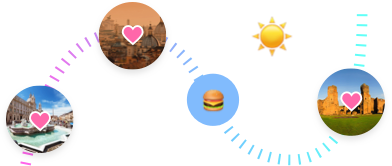



The archaeological excavations of Pompeii have returned the remains of the ancient city of Pompeii, near the hill of Civita, at the gates of modern Pompeii, buried under a blanket of ashes and lapilli during the eruption of Vesuvius in 79, together with Herculaneum, Stabiae and Oplontis. Pompeii, with its 66 hectares of which about 50 excavated (including suburban areas), is a unique set of civil and private buildings, monuments, sculptures, paintings and mosaics of such importance for the history of archeology and antiquity to be recognized as a World Heritage Site by UNESCO.
Researchers believe that the town was founded in the seventh or sixth century BC by the Osci or Oscans. It came under the domination of Rome in the 4th century BC, and was conquered and became a Roman colony in 80 BC after it joined an unsuccessful rebellion against the Roman Republic. By the time of its destruction, 160 years later, its population was approximately 11,000 people, and the city had a complex water system, an amphitheater, gymnasium and a port. The eruption destroyed the city, killing its inhabitants and burying it under tons of ash. Evidence for the destruction originally came from a surviving letter by Pliny the Younger, who saw the eruption from a distance and described the death of his uncle Pliny the Elder, an admiral of the Roman fleet, who tried to rescue citizens. The site was lost for about 1,500 years until its initial rediscovery in 1599 and broader rediscovery almost 150 years later by Spanish engineer Rocque Joaquin de Alcubierre in 1748.[1] The objects that lay beneath the city have been well-preserved for centuries because of the lack of air and moisture. These artifacts provide an extraordinarily detailed insight into the life of a city during the Pax Romana. During the excavation, plaster was used to fill in the voids in the ash layers that once held human bodies. This allowed one to see the exact position the person was in when he or she died.